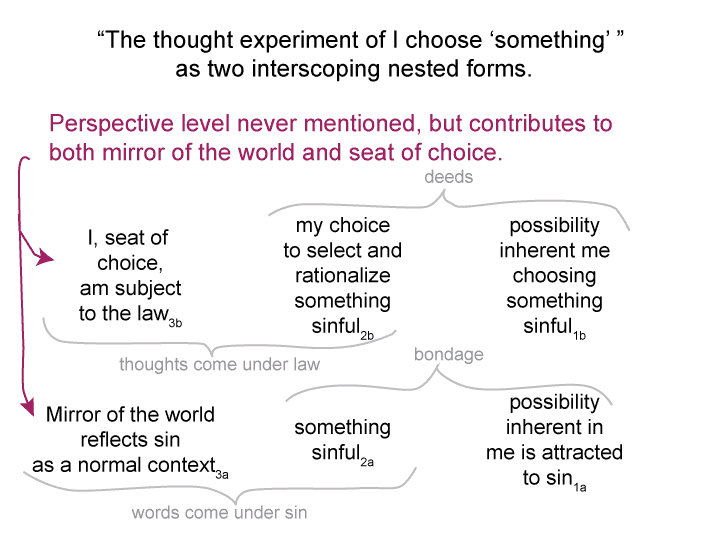Category Archives: Co-oppositions
Man and Sin by Piet Schoonenberg (1964) 2.3 ST
Summary of text [comment] pages 83 and 84
[Schoonenberg’s terms, sin, law and death, also apply to the single actuality generated by the fusion of my choice2V and somethingactual2H. They apply to the person’s heart. They may be modeled by an intersection.]
Man and Sin by Piet Schoonenberg (1964) 2.3 SS
[So maybe there is a clue to death in the interscoping form.
Repetition disorders both consolidate the gains made by death and block further progression towards death.
The interscope consolidates gains.
The intersection prevents further deterioration.]
Man and Sin by Piet Schoonenberg (1964) 2.3 SR
Summary of text [comment] pages 83 and 84
[What about death?
Death could pervade the interscoping form as a repetition disorder. Sins as words (content level) and laws as thoughts (situation level) seems to describe exactly that.
Repetition disorders were accounted for, in Freudian psychoanalysis, as a death wish. In contrast, Jung saw them as actions standing in the way of one’s demise.
Note how Freud and Jung contradict. Contradictions imply the intersection.]
Man and Sin by Piet Schoonenberg (1964) 2.3 SP
[Words3a(2a go with sin.
Thoughts3b(2b go with law.]
Man and Sin by Piet Schoonenberg (1964) 2.3 SO
[On the situation level:
Thoughts3b(2b are in co-opposition to deeds2b(1b)).]
Man and Sin by Piet Schoonenberg (1964) 2.3 SN
[Let me break this down further.
The mirror of the world3a(something2a()) corresponds to either responsibility3a(2a or words3a(2a depending on how something2a situates the potential inherent in me1a.
Something2a situates the potential inherent in me1a as either freedom2a(1a)) or bondage2a(1a)).
So, Schoonenberg’s term “under” could correspond to the mirror of the world3a, or the thought experiment3a, that brings something2a into relation with the potential in me1a.]
Man and Sin by Piet Schoonenberg (1964) 2.3 SH
[The thought experiment3H or the mirror of the world3H brings the potential in me1H into relation to something situating the potential in me2H plus my choosing2V.
I, seat of choice3V, brings the potential in something (that I may choose)1V into relation to something situating the potential in me2H plus my choosing2V.
My heart2 is the single actuality constituted by two actualities of ‘something situating the potential in me 2H‘ plus ‘my choosing2V‘.]
Man and Sin by Piet Schoonenberg (1964) 2.3 SG
[The thought experiment where ‘I choose something’ produces three models.
One is an interscope.
The other two are intersections.
Only one version of the intersections is considered. In this model, the interscope’s situation level became the vertical nested form. The interscope’s content level became the horizontal axis.]


